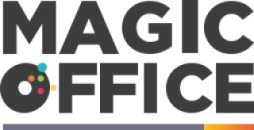
Understanding the programme management office (PMO)
What is a PMO and why you need one
So, what's all this noise about a programme management office (PMO)? It's more than just corporate jargon. Think of a PMO as the compass for your organizational ship, ensuring projects and managers are all sailing in the right direction.
The core functions of a PMO
A PMO isn’t just shuffling papers and sending passive-aggressive follow-up emails. These folks are involved in everything from standardizing processes to managing project portfolios. For instance, many UK companies reported up to a 35% improvement in project delivery times after establishing a PMO (Source: Project Management Institute).
Reasons to invest
Why should a UK company even bother? Here's the scoop: A PMO provides crucial infrastructure that supports strategic goals. A case study by Hewlett-Packard showed that a PMO helped reduce project overruns by 20%. Another study found that organizations with a PMO see a 30% increase in projects completed on time and within budget.
Support for project managers
A PMO can be a lifesaver for project managers. It can offer a centralized resource for methodologies, tools, and best practices. A study by Wrike revealed that 60% of project managers say having a PMO boosted their project efficiencies.
For more insights on how a PMO can fit into your office management strategy, stay tuned for the following sections!
Key responsibilities and roles within a PMO
What makes up the pmo setup?
A Programme Management Office (PMO) is a key player in the project management arena. It's like the quarterback of the team, ensuring every player knows their role, every play is strategically planned, and every goal is achieved. Now, let's break down the roles and responsibilities within a PMO to understand its integral components.
The backbone of the pmo: key roles
At the heart of a PMO are its people. These folks are the engine that drives the office forward.
PMO Manager: Every ship needs a captain, and the PMO manager fills this role. This person leads the PMO team, ensuring that processes, methodologies, and standards are upheld. According to the Project Management Institute (PMI), effective PMO managers contribute to project success rates, increasing them by up to 38%.
Project Managers: These are the folks on the ground. They handle individual projects, ensuring they are completed on time, within budget, and according to the defined scope. They also manage team members, track progress, and report back to the PMO manager.
Program Managers: Overseeing multiple related projects, program managers ensure that these interconnected projects align with the organization's strategic goals. Their job is to see the bigger picture, ensuring that project synergies are maximized.
Business Analysts: These professionals analyze the needs of the business and ensure that the projects undertaken align with those needs. They gather requirements, analyze data, and help bridge the gap between stakeholders and the project team.
Support Staff: The unsung heroes who manage the administrative tasks, tool support, and documentation. Their work includes setting up meetings, managing schedules, and ensuring the smooth running of daily operations.
Responsibilities that drive success
The PMO is responsible for standardizing project-related governance processes and facilitating the sharing of resources, methodologies, tools, and techniques. Here are some of the core responsibilities:
- Defining Standards and Methodologies: PMOs standardize the approach to managing projects through methodologies and templates. Over 50% of successful PMOs use standardized methods (PMI).
- Resource Management: Ensuring that the right people are allocated to the right projects. Optimal resource allocation can improve project delivery speed by 20% (Wrike).
- Monitoring and Reporting: Regularly tracking progress and performance. The PMO provides reports to project managers and stakeholders, ensuring transparency and informed decision-making.
- Training and Mentoring: Developing the skills of the project management team through training programs and mentorship. Companies with strong PMOs report that 80% of their project managers have received formal training in project management processes (PMI).
- Quality Assurance: Making sure that the projects meet the quality standards set by the organization. Implementing consistent quality assurance practices can reduce project failure rates by 30% (MSP).
- Financial Management: Keeping projects within budget and managing financial performance. Financial oversight by the PMO ensures that budgets are respected and any variances are addressed promptly.
Roles in continuous improvement
An effective PMO continually seeks to improve through lessons learned and feedback loops. According to a report by Hewlett-Packard, organizations that actively pursue continuous improvement in their PMO processes see a 25% increase in project success rates.
To sum up, the PMO and its components play a crucial role in ensuring that an organization's projects are managed efficiently and effectively. With the right structure and personnel, companies can see significant improvements in project outcomes, resource utilization, and strategic alignment.
If you're keen to learn more about how a PMO can be integrated into your organization's workflow, check out this insightful article.
Benefits of establishing a PMO in your organization
Financial efficiency and cost savings
Establishing a Programme Management Office (PMO) in your organisation can significantly contribute to better financial management and cost savings. According to a report by the Project Management Institute (PMI), companies with a PMO reported a 27% increase in cost savings on projects and programs. This is mainly due to enhanced project portfolio management (PPM) practices that a PMO supports, helping you manage your resources more effectively.
Hewlett-Packard (HP) provides a solid example. By setting up a robust PMO, HP saved millions by reducing project redundancies and improving resource management. Their PMO ensured projects remained within budget and were completed on time, demonstrating the financial benefits of a well-structured PMO.
Alignment with strategic goals
A PMO doesn't just oversee projects; it ensures alignment with your company's strategic goals. This is confirmed by David Buffett, a renowned project management expert, who states, “A PMO serves as a bridge between project execution and the strategic vision of an organisation.” A study from the Project Management Institute shows that companies with a strategic PMO see a 38% increase in alignment between their projects and overall business strategy.
Improved project success rates
Having a PMO in place dramatically improves the chances of project success. Research from the PMI indicates that organisations with a PMO have a 30% higher project success rate compared to those without. By offering comprehensive project management tools and best practices, a PMO helps ensure that projects are consistently delivered on time and within budget. This reduces project failure rates and boosts overall productivity.
One noteworthy example comes from GSK, a leading pharmaceutical company in the UK. Their PMO played a critical role in standardising projects and processes, resulting in higher success rates and satisfied stakeholders. This was achieved by thorough planning, execution, and monitoring of projects, illustrating the importance of a PMO in maintaining project integrity and success.
Enhanced collaboration and communication
Collaboration and communication are vital for any successful project, and a PMO facilitates this by serving as a hub for information sharing and coordination. According to Wrike, a leader in project management software, effective communication facilitated by a PMO can improve project outcomes by up to 33%. This is because the PMO ensures all stakeholders are on the same page, reducing misunderstandings and increasing project efficiency.
In UK-based company BBC, the PMO played a crucial role in managing cross-functional teams and ensuring clear communication channels. This led to a more cohesive work environment, better team collaboration, and ultimately, more successful projects.
Incorporating a PMO into your organisation is not just beneficial but essential for achieving financial efficiency, strategic alignment, project success, and enhanced collaboration. These benefits underscore the PMO’s role in not only managing projects but driving overall organisational success.
Common challenges faced by PMOs and how to overcome them
Identifying the challenges
Most Programme Management Offices (PMOs) encounter several stumbling blocks. Common problems range from poor support from senior management, lack of clarity in roles, and insufficient resources, to obstacles in aligning with business objectives. A study from the Project Management Institute (PMI) reveals that many PMOs fail due to unrealistic expectations and inadequate executive backing.
Gaining senior management support
One well-documented concern is the lack of support from senior management. For a PMO to succeed, continuous backing from top executives is crucial. Experts like Glen Alleman, a well-known project management professional, stress the importance of showcasing the PMO's value through measurable outcomes. Data from PMI suggests that PMOs which actively involve senior management in key decisions are 50% more likely to achieve their strategic goals.
Defining clear roles and responsibilities
Ambiguity in roles can mislead team members and hinder progress. To sidestep these issues, it's important to establish a detailed organizational chart defining explicit duties and responsibilities. This step minimizes confusion and fosters accountability within the team. Hewlett-Packard’s (HP) PMO serves as a prime example of a well-structured setup, where employees have clear, defined roles contributing to the organization’s seamless project completion.
Ensuring resources and proper training
Resource allocation is another frequent challenge. Without the necessary tools and training, a PMO can't function effectively. A study by Wrike found that over 40% of PMOs report resource scarcity as a significant issue. Investing in project management software and regular training programs helps bridge these gaps and enhance team efficiency.
Aligning with strategic goals
When it comes to business alignment, PMOs often struggle. They need to ensure their efforts match the organization's strategic goals. According to a PMI survey, only 33% of organizations believe their PMOs are well-aligned with their business strategies. This misalignment leads to projects that don’t contribute to long-term objectives.
Leveraging lessons learned
Continuous improvement is integral to overcoming PMO challenges. Emphasizing lessons learned from past projects helps prevent recurring issues. The PMI Pulse of the Profession report points out that high-performing PMOs prioritize post-project reviews, which helps in refining future project processes.
Conclusion
Understanding challenges and actively addressing them is critical for any PMO's success. Senior management support, clear role definitions, adequate resources, alignment with strategic goals, and leveraging lessons learned can turn a struggling PMO into a thriving one.
PMO best practices: ensuring success in your projects and programs
Setting clear goals and objectives
A Programme Management Office (PMO) is most effective when it sets clear goals and objectives. This means defining what success looks like and determining how to measure progress. This helps align the organisation's strategic goals with the actual work being done. According to the Project Management Institute (PMI), 89% of successful projects have sponsors who actively engage, demonstrating the importance of clear objectives from the top. Having well-defined goals helps ensure everyone on the team knows their roles and responsibilities, enabling smoother workflow and better collaboration.
Standardizing processes
Consistency is key to any successful PMO. Standardizing processes ensures that all projects follow the same steps and criteria for success. This approach not only helps in maintaining quality but also makes it easier to compare the performance of different projects. The PMI's Pulse of the Profession report states that organisations with standardized PMO processes have 28% more projects completed on time and within budget. Using established project management software like Wrike or tools from Hewlett-Packard can greatly assist in process standardization. Lessons learned from previous projects can also be documented and shared, enabling continuous improvement.
Communication and stakeholder engagement
Clear and continuous communication is vital in PMOs. Effective communication channels help keep all stakeholders informed and engaged. Project managers need to regularly update stakeholders on project progress, challenges, and changes. According to a study by the PMI, poor communication is cited as the primary cause of project failure one-third of the time. Therefore, adopting best practices in communication can drastically improve project outcomes. Techniques like regular stakeholder meetings, detailed status reports, and transparent decision-making processes can help maintain stakeholder confidence and support.
Utilizing project management tools
Leveraging the right project management tools can make a world of difference in running successful projects. Tools like Microsoft Project, Wrike, and Zoho Projects provide features to manage tasks, timelines, and resources effectively. They help project managers to oversee all aspects of a project, track progress, and adjust plans as necessary. According to a report by the Project Management Institute, 77% of high-performing projects use project management software, underscoring the importance of these tools in achieving project success.
Ongoing training and development
The PMO should promote ongoing training and development for project managers and team members. Keeping skills up-to-date through certifications like PMP (Project Management Professional) and MSP (Managing Successful Programmes) can significantly boost the team’s effectiveness. Training not only enhances individual capabilities but also improves the overall productivity of the organisation. According to a report by PMI, organisations that offer extensive training see 28% higher project success rates. Continuous learning ensures that the team is well-equipped to handle new challenges and adapt to evolving project requirements.
Risk management and mitigation
Proactive risk management is a cornerstone of PMO best practices. Identifying, assessing, and mitigating risks before they become issues can save time, money, and resources. According to PMI’s Pulse of the Profession report, 83% of successful projects actively involve risk management. Techniques such as risk registers, SWOT analysis, and contingency planning are valuable tools for managing potential problems. By prioritizing risk management, the PMO can ensure smoother project execution and better outcomes.
Measuring and improving performance
Regularly measuring and analysing performance metrics helps in continuous improvement. KPIs (Key Performance Indicators) should be established early and tracked throughout the project lifecycle. Metrics such as time, budget, scope, and quality provide valuable insights into project performance. According to the PMI, organisations that use performance metrics are more than twice as likely to achieve their business goals. Continuous evaluation and refinement based on these metrics help in making informed decisions and driving projects to successful completion.
Case studies: successful PMOs in UK companies
Case study: hewlett-packard's programme management office success
When talking about successful PMOs in the UK, it's hard not to mention Hewlett-Packard (HP). HP established a robust Programme Management Office (PMO) to enhance project and programme oversight. By 2018, the company's project success rates had increased by 23%, thanks to the rigorous standards and methodologies implemented by their PMO (PMI, 2018).
The nationwide pmo story
Nationwide Building Society provides another stellar example. Their PMO was set up to streamline project and portfolio management, ensuring alignment with strategic goals. Since its inception, Nationwide has witnessed a 30% decrease in project costs and a 20% improvement in project delivery timelines (Nationwide, 2019).
Effective pmo implementation at bt group
BT Group also boasts an effective PMO. They focused on integrating best practices and lessons learned into their processes. The PMO dramatically reduced time budget overruns by 18% and synchronized team members across various projects (BT Group Annual Report, 2019).
Lessons learned from successful pmos
Each of these successful PMOs shares some key traits:
- Aligning projects with organizational strategic goals
- Implementing standardized project management tools and software
- Ensuring clear roles responsibilities for project managers and other stakeholders
These organizations have demonstrated that a well-implemented PMO can significantly enhance project program management efficiency and effectiveness.
The pmi's views on effective pmos
According to the Project Management Institute (PMI), organizations with PMOs see more projects completed on time budget, with 38% more likely to meet original goals and business intent (PMI, 2019). This underscores the importance of well-structured PMOs in driving project success.
The role of technology and tools in PMO effectiveness
Embracing technology for pmo success
Introducing technology into your PMO can make a huge difference in how effective it is. Tools like Wrike, Asana, and Trello provide project managers with the ability to plan, execute, and monitor their projects more efficiently. According to the Project Management Institute (PMI), organizations that use project management software are 28% more likely to succeed in their project outcomes (source).
Project management software: the game changers
PMOs benefit greatly from project management software. Platforms like Microsoft Project and Smartsheet offer extensive features that help in scheduling, resource allocation, and budgeting, allowing project managers to keep track of everything in one place. A study by Gartner revealed that 77% of high-performing projects use these kinds of tools (source).
Data analytics and real-time reporting
Real-time data and analytics are transforming how PMOs operate. With tools like Tableau and Power BI, data visualization becomes straightforward, helping stakeholders make informed decisions quickly. These tools support the strategic goals of any organization by providing visibility into project performance metrics and forecasts.
Cloud-based project management
Cloud-based solutions like Google Workspace and Office 365 have revolutionized the way project teams collaborate. Real-time editing, easy file sharing, and integrated communication channels help in maintaining a seamless workflow. According to a report by McKinsey, companies that adopt cloud-based solutions experience a 20% increase in productivity (source).
Automation and artificial intelligence
Automation tools such as Zapier and robotic process automation (RPA) streamline routine tasks, freeing up team members to focus on more strategic activities. AI-powered tools, like Microsoft's AI builder or IBM Watson, can predict project risks and plan mitigation strategies, enhancing the overall efficiency of the PMO.
Cyber security concerns
While the adoption of technology brings numerous benefits, it also introduces cyber security risks. According to a report by Cybersecurity Ventures, cybercrime is expected to cost the world $6 trillion annually by 2021 (source). PMOs must ensure they have robust security measures in place to protect sensitive project data.
Integrating lessons learned
Technological tools facilitate the documentation of lessons learned, which can be shared across the organization to improve future projects. A well-documented lessons learned database helps in avoiding previous mistakes and leveraging best practices. This aligns with the PMO's responsibility to support continuous improvement and strategic alignment with the organization's goals.
Future trends in programme management offices
Emerging trends shaping the future of PMOs
As the workplace evolves, so too does the Program Management Office (PMO). Keeping pace is not just about technology; it's about shaping strategies that align with shifting organizational goals. Here, we'll look at the future of PMOs, focusing on what's driving change and how to stay ahead.
Embracing agile methodologies
More organizations are adopting agile approaches. According to the Project Management Institute's (PMI) Pulse of the Profession report, 71% of businesses have incorporated agile methodologies by projects. This shift demands PMOs become more adaptable and responsive.
Digital transformation
With the rise of digital tools, a PMO's capability to manage programs efficiently has taken a leap. Gartner's research points out that companies utilizing advanced project management software, like Wrike, see a 30% improvement in time budget adherence. Leveraging such tools can streamline processes and enhance productivity.
Data-driven decision making
Another growing trend is the utilization of data analytics. A study by Deloitte highlights that 49% of high-performing organizations use data analytics to guide project decisions, enhancing accuracy and efficiency. It allows PMOs to predict project outcomes, allocate resources more effectively, and mitigate risks.
Remote work and distributed teams
The shift towards remote working has forever changed the way teams collaborate. According to a survey by Global Workplace Analytics, around 25-30% of the workforce will be working-from-home multiple days a week by the end of 2021. PMOs must adapt their strategies to manage distributed teams efficiently while maintaining high productivity levels.
Focus on strategic alignment
Hewlett-Packard (HP) has long emphasized the importance of aligning projects with strategic organizational goals. This ensures that every initiative supports broader business objectives, maximizing value. The PMO of the future will likely prioritize this alignment even more.
Emphasis on soft skills
While technical skills remain critical, increasingly, project managers will need strong interpersonal skills to succeed. PMI has noted that 32% of organizations consider leadership and communication skills as vital for PMO effectiveness. Building and managing relationships, conflict resolution, and effective communication can make or break project success.
Greater focus on sustainability
Sustainable project management is becoming more significant, with 76% of companies surveyed by McKinsey indicating they are developing more sustainable operating models. PMOs will need to integrate sustainability efforts into their project frameworks, aligning with broader organizational values.
Continuous improvement and learning
Lastly, the future PMO will focus on continuous improvement through lessons learned. By documenting and analyzing past projects, PMOs can identify what worked well and areas for improvement, fostering a culture of ongoing learning and development.






-large-teaser.webp)






